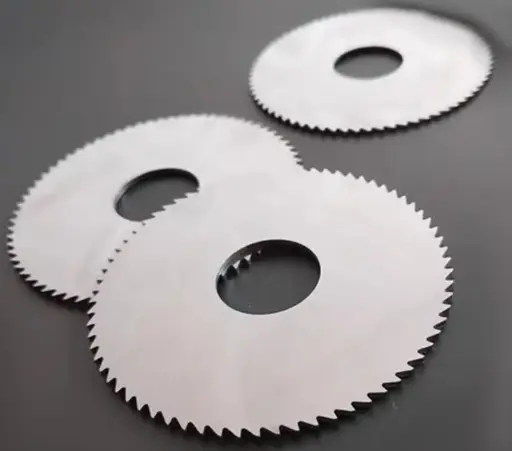Slitting Saw Geometry: A Key to Precision Cutting
Slitting saw geometry refers to the specific design and arrangement of the cutting teeth on a slitting saw blade, a type of circular saw used to cut slots or make narrow, precise cuts in various materials. Understanding these geometries is crucial for optimizing cutting performance, achieving the desired cut quality, and ensuring efficient material removal.

Key Features of Slitting Saw Geometry Include:
- Tooth Form: This includes different tooth shapes and configurations, such as the rake angle (the angle of the tooth face), clearance angle (the angle at which the tooth tilts away from the cutting edge to reduce friction and heat), and the arch-like structure (the space between the teeth that facilitates effective chip removal). Proper tooth form ensures smooth cutting and reduced tool wear.
- Tooth Pitch: The distance between adjacent teeth, known as pitch, affects several aspects of cutting, particularly cutting speed, chip load, and the surface finish of the workpiece. A larger pitch allows for better chip evacuation, while a smaller pitch supports finer finishes on delicate materials.
- Tooth Count: The number of teeth around the blade’s circumference plays a critical role in defining the cutting action. Blades with more teeth provide a smoother cut and finer finish, while fewer teeth are typically used for faster material removal.
- Blade Diameter and Thickness: The overall size and cross-sectional width of the slitting saw blade determine the maximum cutting depth, rigidity, and stability during the application. Thicker blades are more robust but require more power and may produce wider cuts.
- Material and Coating: The blade material—commonly high-speed steel (HSS) or carbide—and specialized surface coatings (like TiN or TiAlN) significantly influence performance. These factors contribute to heat resistance, wear protection, and overall tool longevity, especially in high-speed or high-volume cutting environments.
How Geometry Affects Performance:
- Cutting Speed and Feed Rate: Rake angle and tooth pitch directly impact the cutting forces and the rate of material removal. Optimized geometry reduces tool load, enhances feed efficiency, and ensures cleaner cuts even at higher speeds.
- Chip Removal: The gullet shape and pitch determine how effectively the blade can remove chips. Efficient chip clearance helps in maintaining cutting accuracy and preventing clogging, tool deflection, and overheating.
- Surface Finish: The number of teeth and their sharpness influence the smoothness and accuracy of the cut. A high tooth count produces a finer finish, which is ideal for applications requiring tight tolerances.
- Blade Life: Tooth design, material selection, and advanced coatings collectively affect how long the blade can be used before re-sharpening is necessary. Properly engineered geometry ensures consistent performance over time, reducing downtime and tooling costs.
Conclusion:
Understanding slitting saw geometry is essential to achieving optimal cutting performance, improving tool life, and ensuring high-quality results. Each element – whether it’s tooth size, pitch, tooth count, blade shape, or material – plays an essential role in how the saw interacts with the workpiece. By selecting the right geometry for your application and material type, you can reduce tool wear, minimize cutting forces, improve chip evacuation, and produce cleaner, more accurate cuts. In precision machining, paying attention to these geometric factors is not only beneficial – it’s critical to efficiency and consistency.